STUDENTS PROJECTS
PROJECTS2013
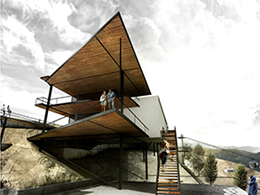
10 February, 2014
Reformation and rehabilitation of an inactive quarry, with spatial location of uses for Tourism, Recreation and Environmental Education
The purpose of our diplomatic work was the revival of the inactive Amiantos quarry, in a way that highlights the specificity of the site and its history.
Students: Theodorou Elena, Chartoupallou Anna
Supervisors: Georgios Patrikios, Kostis Keventzidis, Dimitris Loukopoulos
Democritus University of Thrace
Submission date: November 2013
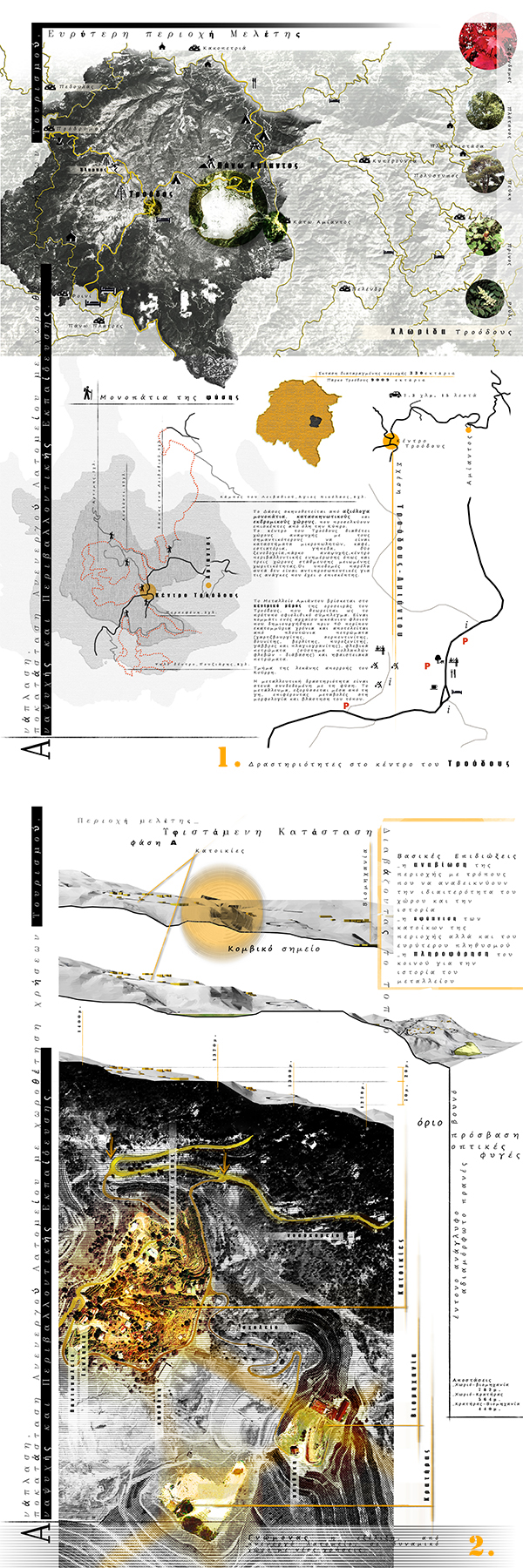
Our study area is located on Troodos mountain, in Cyprus. Amiantos is an inactive asbestos quarry. "Amiantos" is the Greek word for asbestos which the area took its name. The mine is very close to Olympos, the highest peak of Troodos mountain. Troodos is characterized by extensive woodland and rich vegetation, constituting a National Forest Park. Due to the natural environment, climate and the cultural heritage, Troodos constitutes an attraction for recreational activities.
Regarding the history of Amiantos' mine, the organized production began in 1904 in the current area of the quarry, when people found uses for the mineral. By 1950, quarried was done manually, with almost absolute dependence on the employment of a large number of workers. Following the mechanization of the quarry and factory operation in 1963, the workforce was reduced and has a result the gradual depopulation of the mining village. Due to the quarrying activity, 330 hectares of the state forest were destroyed.
At the northern part of the quarry was located the village of Amiantos. Most of the houses were temporary lodgings which developed into permanent residences, were evolved and helped the development of a community with a school, a hospital, a bakery, a church and several shops. On the other hand, the southern part of the quarry was the site of ore mining and processing. The aerial railway was 30 kilometers long and served the transportation of asbestos from the wagons to Limassol's warehouses, from where the mineral was exported.
Quarrying became the reason of considerable environmental issues, such as the destruction of the natural forest and the pollution due to the presence of asbestos fibers. Pronounced is the effect on the health of surrounding residents and the wild life (flora and fauna), in general.
Nowadays, the quarry is under the jurisdiction of the Department of Forests (Ministry of Agriculture, Natural Resources and Environment), which has begun a reforestation project, while the area is restricted to citizens due to hazards of asbestos.
For the promotion of the area, the state foresees the establishment of a cable car station, having as starting point South Asbestos village, leading to Troodos. At the same time, it is planned the creation of an artificial lake at the crater point for water supply. Studying concurrently the surrounding area, we found that there is the need for a well-organized network of interventions, that enhances the local character of Troodos central site and the wider region.
Our main pursuits were, primarily the revival of the region in ways that highlight the specificity of the site and its history, as well as the promotion of public awareness about the history of the quarry.
Aiming the development of an inactive quarry to a dynamic place with new uses, showing respect for the landscape, our primary goal was to link the three areas enhancing of the triplet lake-village-industries.
It is foreseen that village residences are restored and used as hostels, an artificial lake is created in the quarry crater and the industrial buildings are maintained as shells and are used as premises of an open museum. At the same time, we place the premises of a new museum in conciliation buildings - shells of old industries. We add a research center which is thought to be linked with the environment of the quarry and will promote the development of the region. Thus the scenario of the development of an attraction offered for visitors' accommodation, recreational activities and raising environmental awareness, is completed.
The main tool for the first tracings was the configuration of aerial and terrestrials routes, which could be used for combining research, visiting, observing and walk. The aerial route connects South Amiantos village with Amiantos quarry and then with Troodos. The terrestrial connection of the three sites is a trekking path which has as a starting point the village, running through the focal point of the three sites and leads to the museum, passing by the lake.
We modulate routes, which follow either natural landscape or basic tracings. Due to the long distances it is necessary the creation of intermediate stops.
It is important to create squares of different character at the three sites, in order to give each site, a concentration point. Despite their connection each square has its own specificity because of its use. Thus we set up a square in the village, one in the hub, where the cable car station and the research center is found, one close to the lake and finally, one by the industries. All squares have a trapezoid (rectangular) shape.
We located three parking sites. One parking is set up site close to the village, at an existing plateau where there is no need of alteration of the topography and its boundaries are determined by plantations. Another parking site is located close to the research center and finally, one close to the lake.
Pathways are developed in order to lead the visitor from the village to the square and after this to the research center or the cable car station. The way to the research center is the basic trekking path.
The research center:
- Can be used by environmentalists, geologists and foresters within the framework of a permanent study the development of reforestation at the destroyed area. We empower our spatial program as we consider that there is cooperation with the relevant departments of universities in Nicosia and Limassol.
- Lecture rooms are available for the university lectures or presentations of Cypriot and foreign/international researchers.
- It has special freezing chambers (Seed Bank) for the conservation and storage of seed lots of rare plants of Cyprus, at the premises of permanent research.
With the coexistence of the two buildings at the square we enhance the square's role as a mobility junction. Although, both buildings are generally defusing and they are relatively autonomous at the square.
The formation of the square is defined by the aerial cable car lines, as well as by the linear building of the research centre. The building's mass of the research centre is placed at the south part of the square and is set as a boundary. The basic route follows the line of the building so that the visitors can experience the building and the mine during the descent to the lower levels.
Generally, the composition of the building volume of the research centre is divided into different levels, separating its function into departments, with the tracings following the natural topography.
There are three distinct volumes:
- A section, at the same level with the square which consists of a reception area, a cafeteria and an amphitheater.
- A library at a lower level, functioning as a junction between the lower volumes of laboratories.
A core is placed that connects the level of the square to the level of the laboratories and the library and could be used for fast descent. At the same time there is a second way which is displayed in the front of the research section and is a gradual pathway. At the descent way a small amphitheater lecture room is created.
We modulate nature trails around the lake, on which are hinged several decks for walkers and fishers. At the end of the trails, we find an observatory on a high point from where we can see the wetland. We maintain a piece of the lake intact, so that in the future be able to thrive wetland.
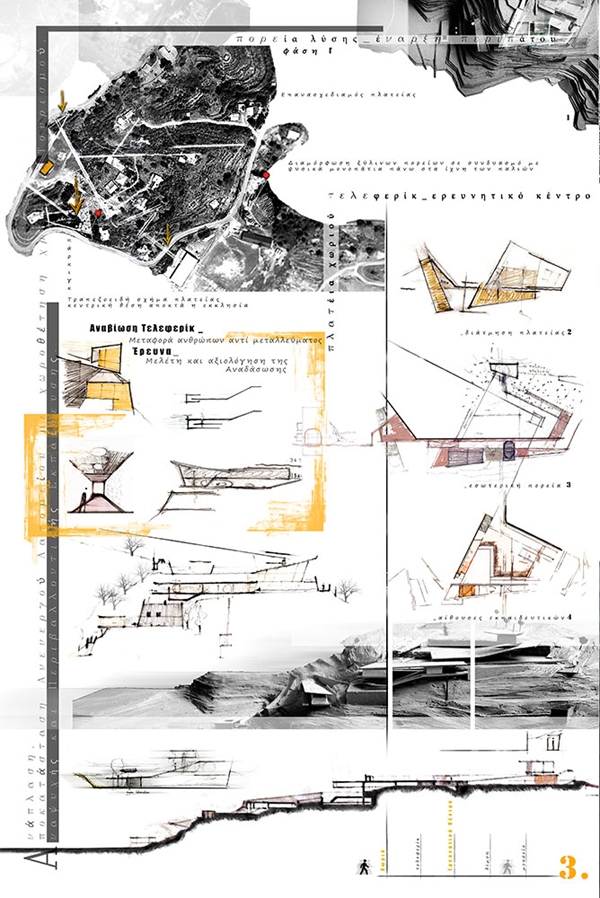
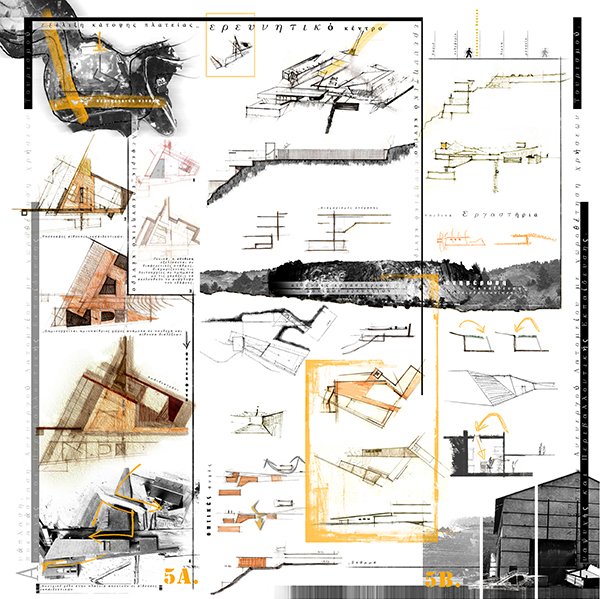
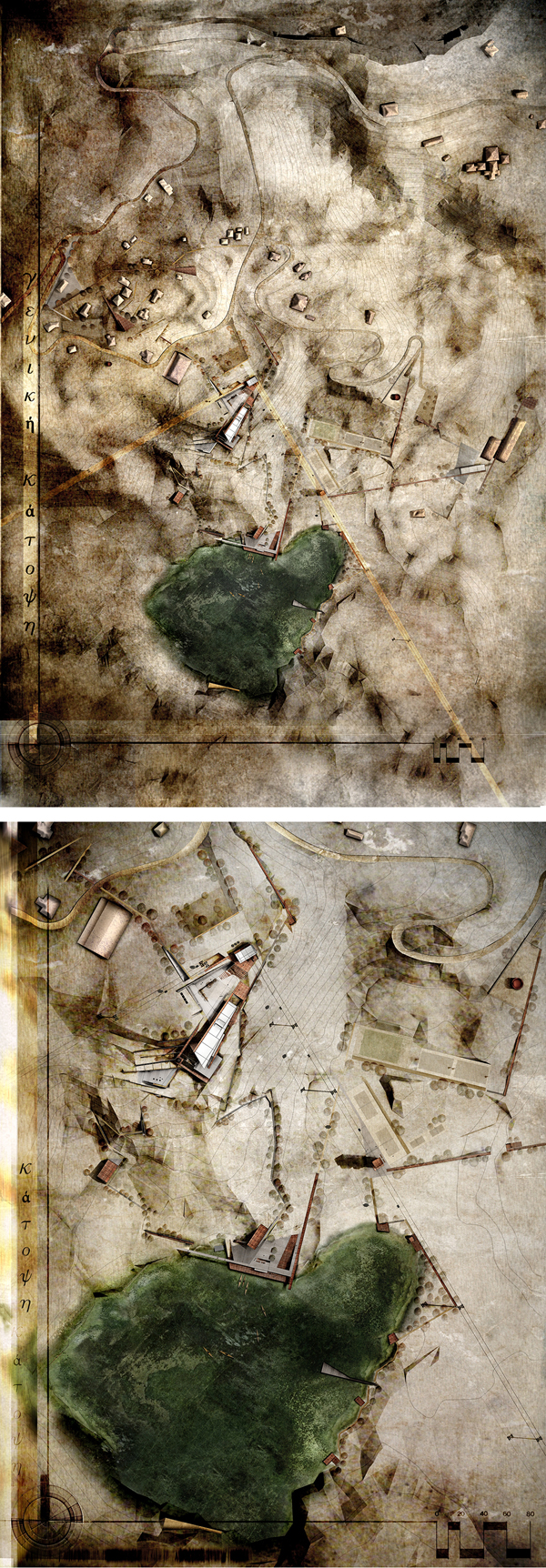
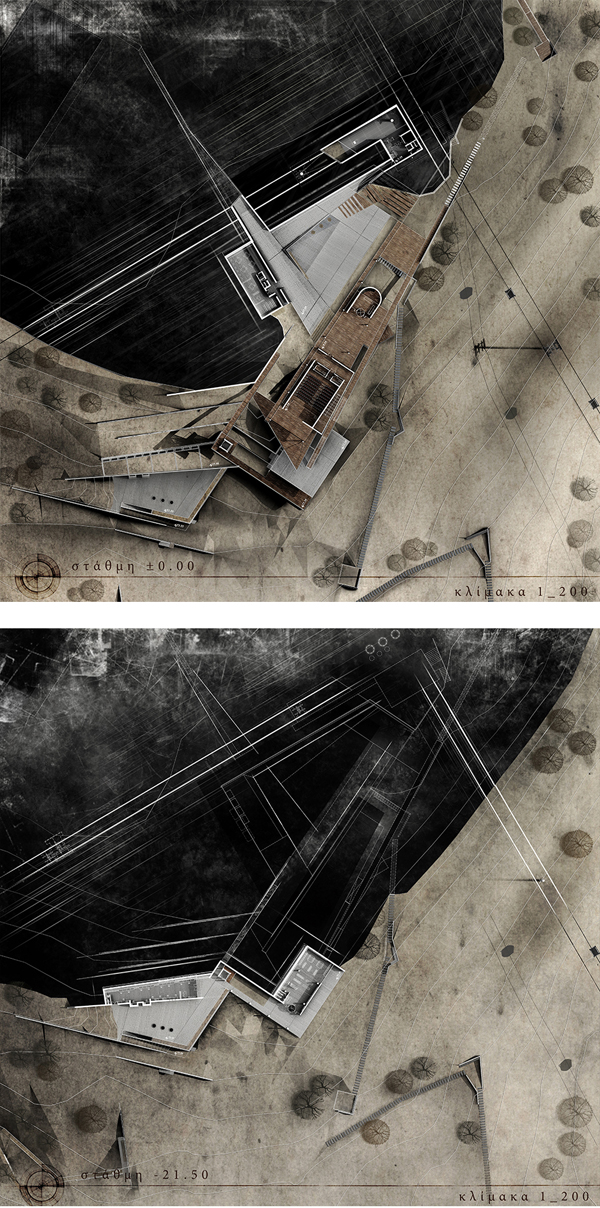
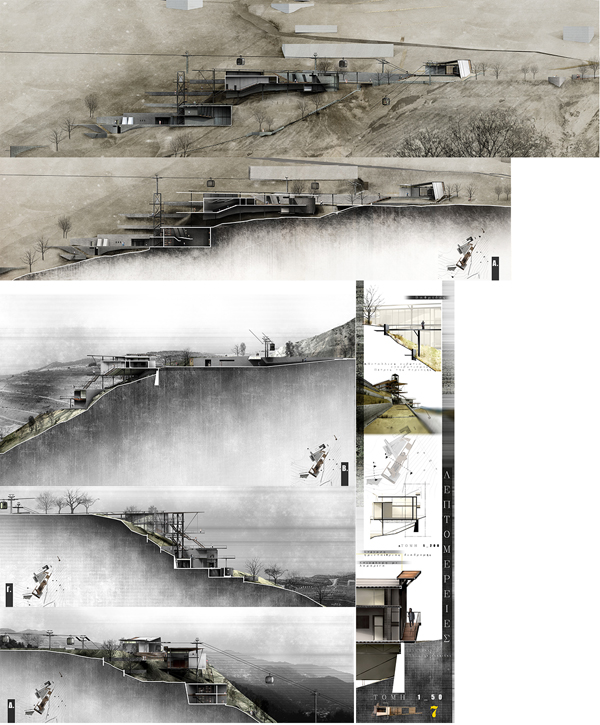
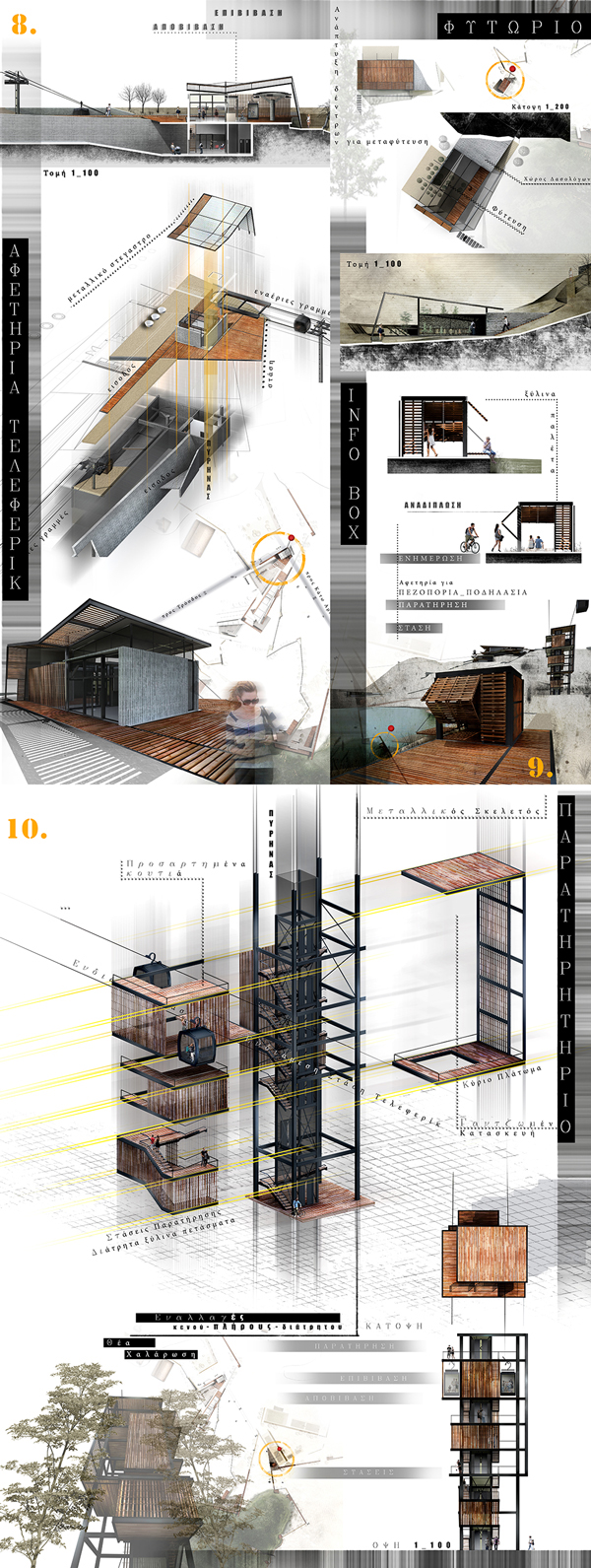
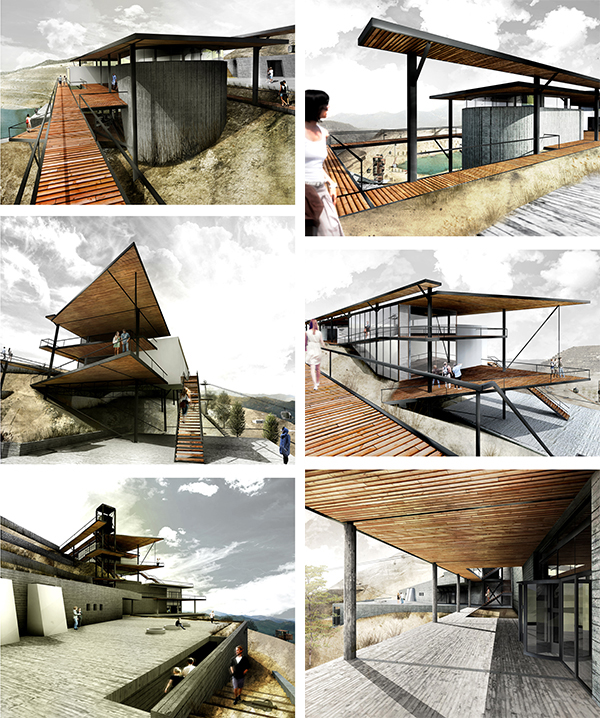
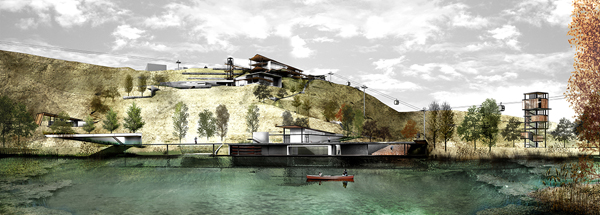
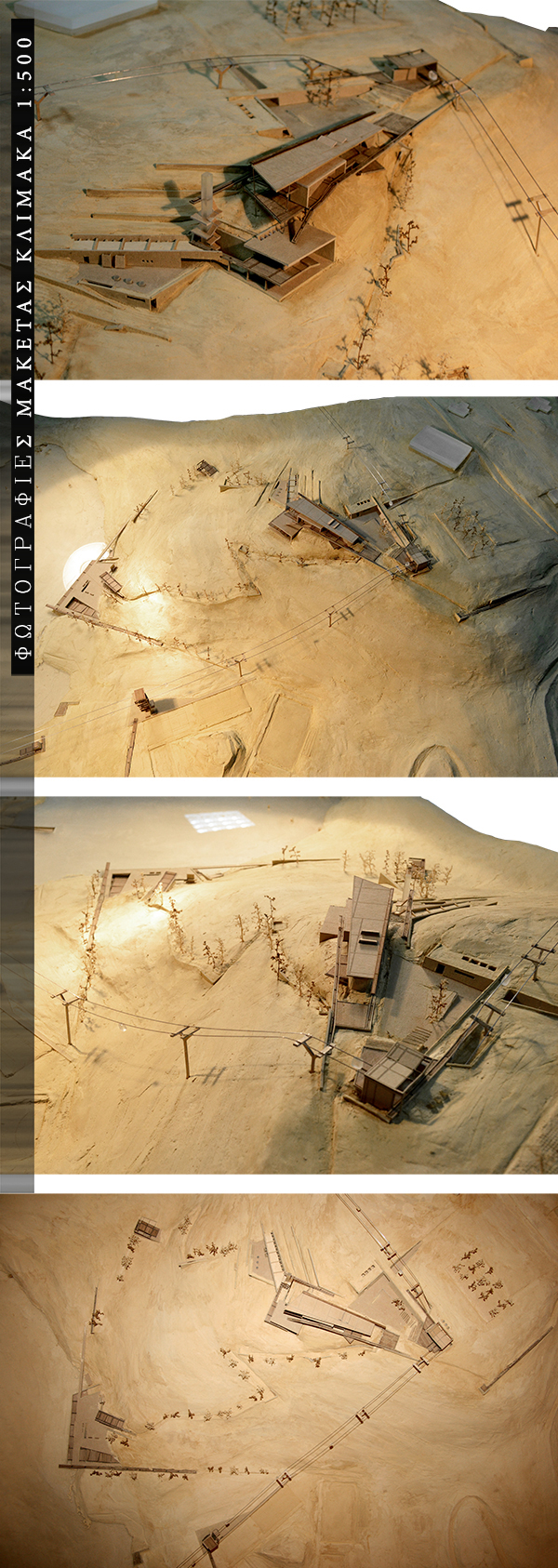
Related articles:
- DESTROY below the ACROPOLIS - VIDEO ( 13 November, 2007 )
- Industrial Building on the fringes of Attiki Odos ( 15 November, 2009 )
- Architectural cannibalism in Athens ( 23 July, 2009 )
- The Acropolis Museum: An Unhappy Fit ( 08 June, 2010 )
- The New Acropolis Museum: A Triumph of Sophistry ( 21 September, 2009 )
- MEDICAL INSTRUMENTS FACTORY AT RAFINA, ATTICA ( 20 October, 2009 )
- Αrchitectural competition ( 13 March, 2009 )
- D. Areopagitou 2008: reformation competition of the rear views of historic buildings towards the new Acropolis Museum ( 25 July, 2011 )
- Reutilisation of the building T.A.O.L. in Lefkada ( 23 June, 2010 )
- Routes in the paths of emery ( 01 February, 2011 )
- Urban integration and reuse of the former paper industry of Ladopoulos in Patras ( 20 February, 2011 )
- The old factory of Azel ( 04 April, 2011 )
- Restoration and reuse of the Tzivre silk mill in Soufli ( 14 June, 2011 )
- Project Suggestion for Reusing KOMDE’s industrial complex in Trikala ( 16 August, 2011 )
- Mining Museum in Serifos ( 15 February, 2012 )
- Multi-space of Meditteranean Diet in metropolitan park in Goudi ( 05 March, 2012 )
- Subverting the non use ( 26 March, 2012 )
- Cultural Park in inactive lignite mines of Ptolemaida ( 27 September, 2012 )
- Winery in Nemea ( 01 May, 2012 )
- New Acropolis museum ( 06 January, 2013 )
- All about fish ( 14 February, 2013 )
- Industrial landscape in Aliveri ( 16 August, 2013 )
- Memory nd urban sityscape ( 24 May, 2013 )
- New Acropolis Museum (NAM) ( 07 October, 2013 )
- The archaeological museum of Ancient Messene and the architectural configurations of the archaeological site ( 08 January, 2014 )
- Redefining Leftovers ( 05 April, 2014 )
- Theatre complex at Koukaki, Athens ( 20 January, 2014 )
- Decontamination and Production Mechanism ( 05 February, 2014 )
- Reformation and rehabilitation of an inactive quarry, with spatial location of uses for Tourism, Recreation and Environmental Education ( 10 February, 2014 )
- Cultural center of Glyfada ( 23 February, 2014 )
- Environmental Center and Cultural Center in Kaiafa’s Lake ( 21 March, 2014 )
- The rack railway museum at Vouraikos gorge ( 18 April, 2014 )
- Redesigning the silo at the historic Allatini Mills ( 09 May, 2014 )
- Museum of underwater antiquities in Chios ( 01 June, 2014 )
- Restructuring the Industrial Landscape ( 19 July, 2014 )
- Archaeological museum in Astypalaia ( 03 November, 2014 )
- inte[R]outes ( 11 December, 2014 )
- Lato and Kekrops Quarries: a walk in the residual landscape ( 28 January, 2015 )
- Print your utopia ( 07 February, 2015 )
- Art multiplex in the Customs Office area in Palaia, Volos ( 24 February, 2015 )
- Diploma projects exhibition museum of school of architecture ( 02 March, 2015 )
- Lighthouse Museum in Andros ( 20 April, 2015 )
- Archaeological Museum for the Neighbourhood of Plato’s Academy ( 15 April, 2015 )
- Palazzo di Lorenzo’s Museum in Sicily ( 15 May, 2015 )
- New Archaeological Museum of Delos ( 19 July, 2015 )
- Archaeological Museum of Eleftherna ( 01 September, 2015 )
- ADAPTIVE REUSE OF A FORMER PAPER FACTORY IN AIGIO AND CONVERSION TO REHABILITATION CENTRE FOR DISABLED PEOPLE ( 12 August, 2015 )










